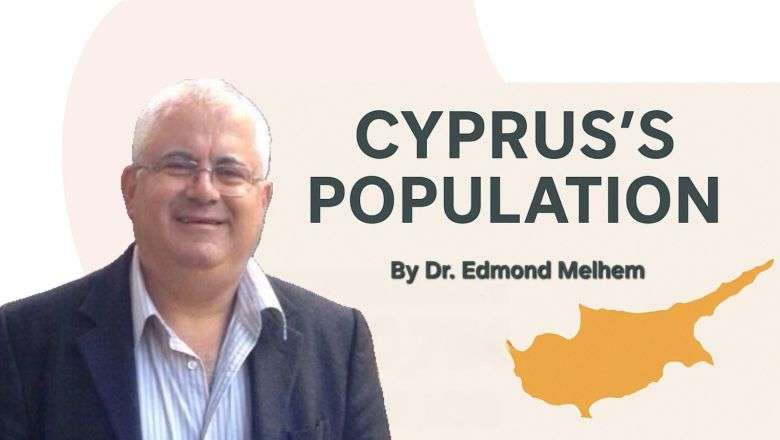Cyprus's
population is a blend of various ethnic and religious groups that have settled
on the island, shared its space and interacted throughout history. One such
group is the Maronites, named after their ascetic teacher St. Maron, a Syrian
hermit from the late fourth and early fifth centuries. Another small religious
group is the Armenians, whose presence in Cyprus dates back to 578 A.D, during
the Byzantine Era. Today’s Armenian-Cypriot community consists essentially of refugees
from Anatolia (descendants of Genocide survivors) and new immigrants who
arrived over the last 40 years from different countries.[1] The Muslims form another minority on the island,
having emerged during the Ottoman period. This group included the Ottoman
garrison, Islamized Greeks, and Turkish settlers from Anatolia, a less-developed
region of Turkey. Since 1974, the Turkish government has actively encouraged
settlement in the TRNC by offering housing and agricultural land. By 1998, the
number of settlers was estimated at around 111,000, according to some
international reports and Greek-Cypriot researchers. These settlers now
outnumber the indigenous Turkish Cypriot population. In 2003, Jaakko Laakso, a
Finnish rapporteur, prepared a report for the Parliamentary Assembly of the
Council of Europe. He noted that the settlers’ customs and traditions differ
significantly from those in Cyprus. These differences are the primary source of
tension and dissatisfaction among the indigenous Turkish Cypriot population,
who often view the settlers as a foreign element.[2] The first generation of settlers did not fully
integrate into Turkish-Cypriot society. They remain attached to their country
of origin and aim to return and live there later.
There is also a
Pontian community, numbering approximately 20,000, who reside in the Republic
of Cyprus, with half of them in Paphos. They migrated from Georgia after
obtaining Greek nationality, following the disintegration of the USSR.[3] Before
settling in Georgia near the Turkish frontier in the nineteenth century, they
had lived in the Turkish cities of Kars, Trabzon and Erzurum. Thus, “they still
speak Turkish in family circles besides Russian, Greek and Georgian.”[4] They participate in local elections and enjoy almost
identical rights as Cypriots. In addition to the Pontian community, there are
over 150,000 immigrants in Cyprus who originally came from the former
Yugoslavia and the Soviet Union bloc, including Serbians, Russians, Ukrainians,
Georgians, Moldavians, and Southeast Asia: Filipinos, particularly women, Sri
Lankans, Indians, Pakistanis, and Chinese, as well as Iranians. Furthermore,
there are British, Jewish and Gypsy communities residing on both sides of the
island. The British community consists of retired and well-off British
citizens. Some of them have purchased property in the TRNC and obtained TRNC
nationality.[5] The Gypsies number about 3000 and consist of three
groups: the Ghurbetis, who are turcophone Mulsim gypsies, the majority of
whom live in the TRNC; the Mandis, who are Grecophone Christian Gypsies. They live in
the Republic of Cyprus; and the Romans who came from Anatolia after 1974. There have been
reports of mistreatment and discrimination against the gypsies by the TRNC. Some
gypsies filed complaints in 1994 before the European Court of Human Rights, accusing Turkey of arbitrary arrests and the demolition of their houses.[6] The Jewish
community settled on the island after their expulsion from Andalusia. Some
arrived during and after the Second World War. A large number of them left for
occupied Palestine after the establishment of the state of ‘Israel’. Today, the
Jewish community of Cyprus totals about 3,000 persons who originally came from
Russia, Lebanon, and Syria. They built their first synagogue in 2005 in
Larnaca.
According to the
first census carried out by the British authorities in 1881, the total
population of Cyprus was 186,173, of whom 137,631 (73,9%) were Greek Orthodox,
45,438 (24,4%) were Muslims and 3,084 (1,7%) were minorities of Maronites,
Latins (descendants of French, Italian, Venetian, Spanish and Austrian nobles
and merchants) and Armenians.[7] These religious groups vote in the Parliamentary
Elections as part of the Greek Cypriot community. Each group elects one representative
from their ranks to the Cyprus House of Representatives.[8] According to the Constitution of the future United
Republic of Cyprus and the UN Annan Plan for a federal solution in Cyprus, the
three religious groups (Latin, Maronite and Armenian) are referred to as
minorities.[9] A few hundred Greek Cypriots and 140 Maronites live
in the TRNC and participate in the elections on the Greek Cypriot side.
Representatives of these two communities have been nominated by the
Greek-Cypriot Government, but have not been recognized by the Turkish-Cypriot
authorities.
[1]
A large number
of Armenian political and economic immigrants arrived at the island because of
the civil war in Lebanon (1975-1990), the insurgencies in Syria (1976-1982),
the Islamic revolution in Iran and the Iran-Iraq war (1978-1988), as well as
after the Spitak earthquake (1988) and the dissolution of the Soviet Union
(1991). See a booklet titled The Armenians of Cyprus – Cyprus Religious
Groups, produced by the Press and Information Office, Republic of Cyprus.
[2] Emel Akçali. “The ‘Other’ Cypriots and their Cyprus Questions”, p. 15.
[3] Emel Akçali. “The ‘Other’ Cypriots and their Cyprus Questions”,
[4] Ibid., p. 10.
[5] Ibid., p. 19.
[6] Ibid., p. 19.
[7] Valantis Athanasiou. Cyprus during the Great War, https://www.academia.edu/33255343/Cyprus_during_the_Great_War?sm=b
[8] representatives of the
religious communities each hold a seat in the House of Representatives of the
unitary Republic of Cyprus under Greek-Cypriot administration but without the
right to vote.
[9]
Emel Akçali. “The ‘Other’ Cypriots and their Cyprus Questions”,

